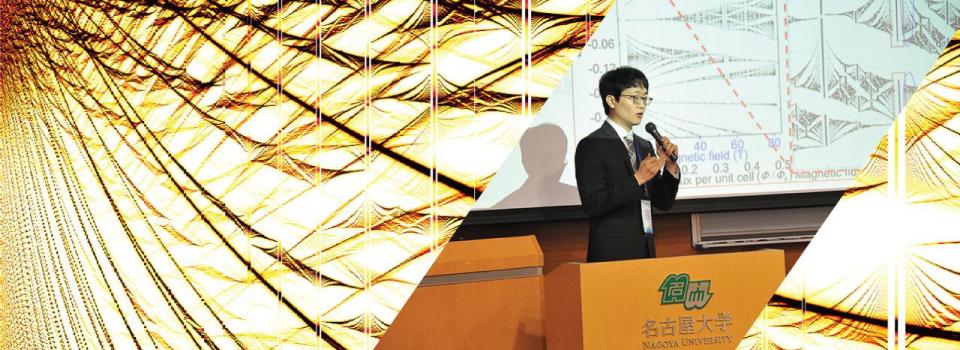Sep 02 2015
Published by
NYU Shanghai

NYU Shanghai Assistant Professor of Physics Pilkyung Moon gave an invited talk on the Physics of Moiré Superlattice at The Sixth Graphene and Two-dimensional Materials Satellite Symposium (Nagoya, Japan) in June 28th, 2015.
Crystalline lattices are solid state materials of which constituents (atoms/molecules) are arranged in a highly ordered repeating pattern. Since material properties, such as optical, thermal, and magnetic properties, are mainly determined by the periodicity of crystalline lattices, there have been many attempts to control these properties by designing the structures with artificial lattice period (superlattice). Recent advances in nanotechnology have realized a new type of two-dimensional superlattice made by the layer-by-layer stacking of atomically-thin layers such as graphene and hexagonal boron nitride.
Professor Moon developed a theoretical model to investigate the material properties of such unique material system. And his calculation results as well as analysis clarify that this system is one of the first example of crystalline lattice of which material properties are mainly governed by the moiré interference of atomic arrangement rather than the arrangement itself. The research findings enable the control of material properties far beyond the limit of conventional materials, since the period of moiré interference pattern is much (10 to 1000 times) longer than that of constituent material.
Professor Moon also showed that moiré superlattice can provide a unique opportunity to investigate the fractal evolution of electron energy spectrum under the simultaneous influence of periodic potential and magnetic field, aka Hofstadter's butterfly. Such fractal evolution of energy spectrum arises from the commensurability of the lattice period and the magnetic length, and was first predicted in an ideal system by Douglas Hofstadter - best known for his Pulitzer-prize-winning book Gödel, Escher, Bach - in 1976. However, Hofstadter's butterfly has never been observed so far, because unfeasibly large magnetic field of thousands of Tesla is required to observe the phenomenon. Recently, Professor Moon theoretically predicted that electron in moiré superlattice can strongly interact with magnetic field so that its energy spectrum can evolve into self-similar fashion. And, in collaboration with experimental groups, Moon published the first evidence of the full spectrum of Hofstadter's butterfly in the journals of Nature and Science. Science introduced these results in their perspective, and Physics World, the membership magazine of Institute of Physics, has identified these results as one of the “top ten breakthrough of 2013”.
Moiré superlattice not only provides versatile design of materials but also provides a unique opportunity to investigate many unsolved problems in fundamental physics.
Photo Credit: Pilkyung Moon


